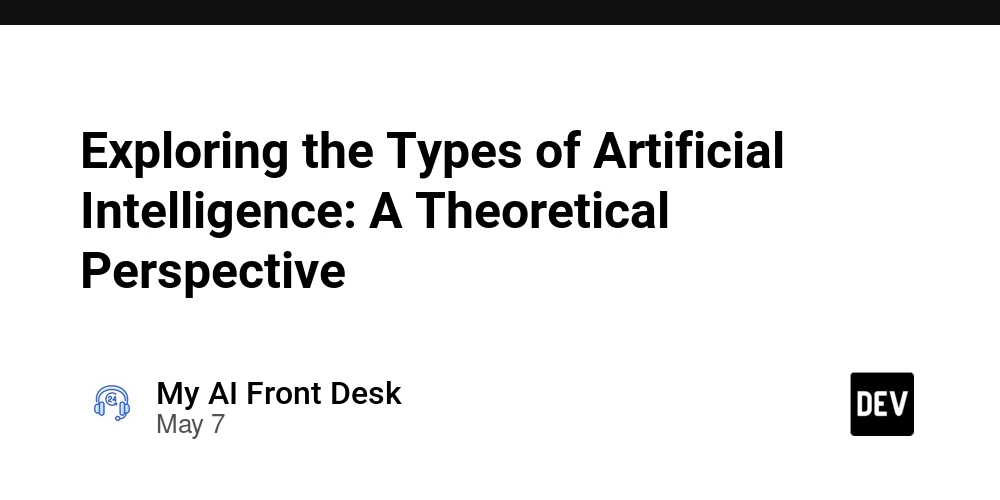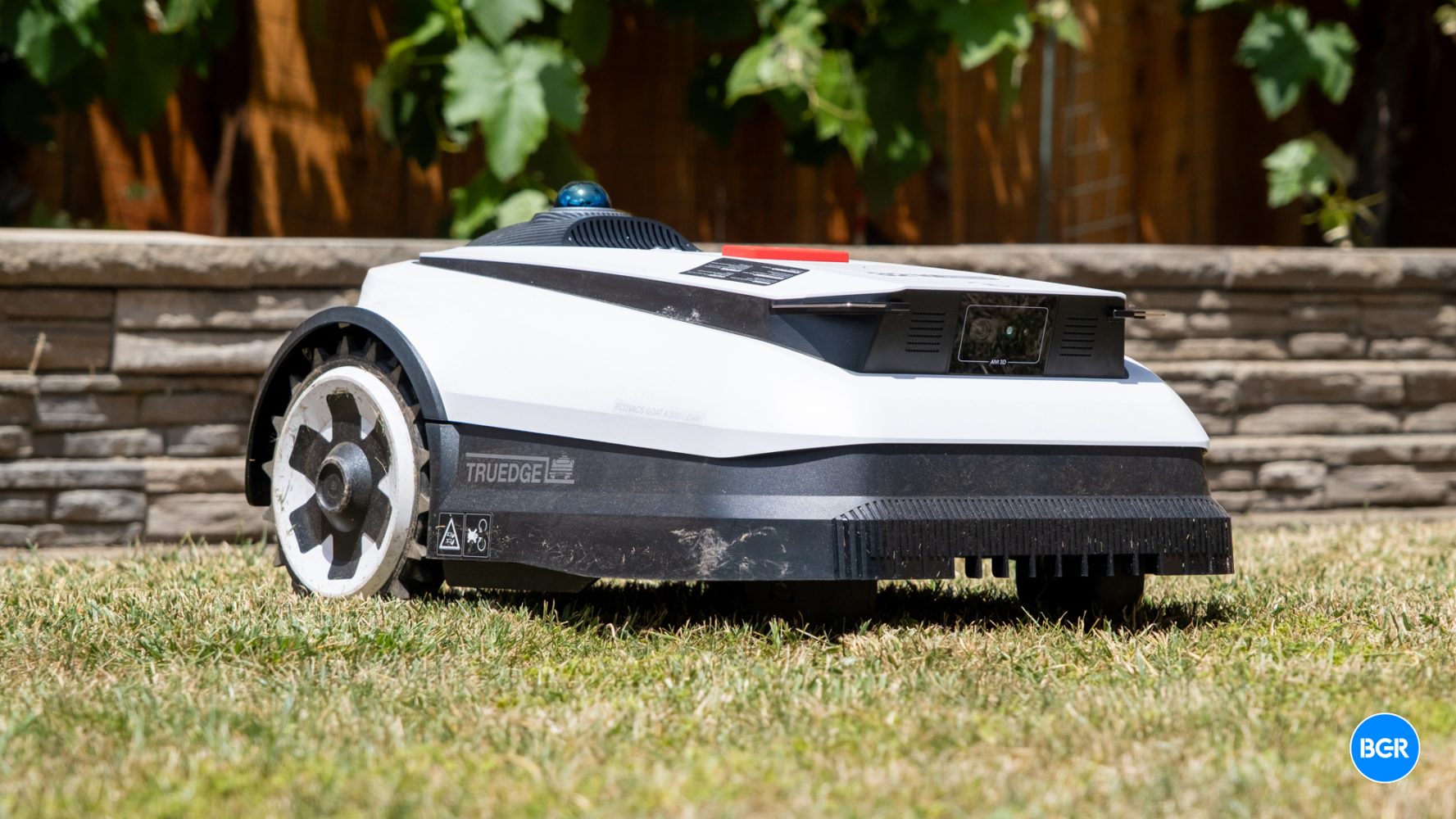Exploring the Types of Artificial Intelligence: A Theoretical Perspective
Artificial Intelligence (AI) is revolutionizing the way we live, work, and interact with machines. While many people associate AI with robots or voice assistants like Siri and Alexa, the concept runs much deeper. AI refers to the ability of machines or software to mimic human intelligence, including learning, reasoning, and self-correction. To truly understand AI, it's important to recognize that not all AI is the same — it can be categorized into different types based on capabilities and functionalities. Let’s explore these classifications in detail. 1. Understanding AI Based on Capabilities When we classify AI based on what it can do, we get three main types: ** a. Narrow AI (Weak AI)** This is the most common form of AI that exists today. Narrow AI refers to systems that are designed and trained to perform a single specific task. These machines cannot do anything beyond what they are programmed for. For example, Google Translate can convert text from one language to another, but it cannot identify images or play chess. Similarly, a spam filter in your email is a type of narrow AI — it's effective in sorting messages but cannot perform unrelated tasks. b. General AI (Strong AI) General AI is still a theoretical concept at this point. It refers to an AI system that can understand, learn, and apply knowledge across a wide range of tasks — just like a human being. A machine with general AI would be able to switch from solving a math problem to writing a poem or playing a musical instrument with no additional programming. It would possess cognitive abilities similar to a person, including the capacity to reason, plan, and make decisions. Scientists and researchers are actively working toward this, but we’re still far from building a truly general AI. c. Super AI Super AI takes things a step further. This type of intelligence would surpass human intelligence in every possible field — from creativity to decision-making to emotional intelligence. While this might sound like science fiction, experts believe it could become a reality someday. A Super AI could potentially develop its own ideas, solve global problems, and even become self-aware. However, this level of AI also raises major ethical, social, and philosophical questions about control and safety. 2. Understanding AI Based on Functionality AI can also be divided into categories based on how it works or what it can do internally. a. Reactive Machines These are the most basic types of AI systems. They can respond to specific inputs with specific outputs but have no memory or past experience to refer to. IBM’s Deep Blue chess computer is a classic example. It could play against a grandmaster and analyze possibilities, but it didn’t learn from past matches or improve over time. It simply reacted to the current move. b. Limited Memory Limited memory AI can make decisions based on a small set of past data. Most AI models used today, such as chatbots, self-driving cars, and virtual assistants, fall under this category. For example, a self-driving car uses data from previous rides to make better decisions like stopping at red lights or avoiding pedestrians. However, it cannot form long-term memories or evolve independently like a human brain. c. Theory of Mind This is another type of AI that still exists mostly in theory. The goal here is to develop machines that can understand human emotions, beliefs, intentions, and thoughts. If achieved, such AI could interact with people in a much deeper and more personal way — for example, understanding when someone is angry or confused and responding accordingly. This would mark a major breakthrough in human-machine relationships. d. Self-Aware AI The most advanced form of AI, which still belongs in the realm of imagination, is self-aware AI. These machines would not only understand human emotions but also possess consciousness, self-awareness, and the ability to understand their own existence. Think of robots in science fiction movies that question their own purpose or develop desires — that’s the idea behind self-aware AI. It opens the door to both fascinating advancements and serious ethical dilemmas. Conclusion Artificial Intelligence is a powerful and rapidly evolving technology. From simple machines that follow rules to future systems that could think and feel, AI has a wide spectrum of possibilities. Understanding its types helps us grasp where we stand today and where we might be headed tomorrow. While some forms like Narrow AI are already embedded in our daily lives, others like Super AI and Self-Aware AI are still in development — or perhaps, only dreams for now. As we move forward, it's essential to not only develop AI responsibly but also ensure that its progress aligns with human values, safety, and ethical considerations.

Artificial Intelligence (AI) is revolutionizing the way we live, work, and interact with machines. While many people associate AI with robots or voice assistants like Siri and Alexa, the concept runs much deeper. AI refers to the ability of machines or software to mimic human intelligence, including learning, reasoning, and self-correction. To truly understand AI, it's important to recognize that not all AI is the same — it can be categorized into different types based on capabilities and functionalities.
Let’s explore these classifications in detail.
1. Understanding AI Based on Capabilities
When we classify AI based on what it can do, we get three main types:
**
a. Narrow AI (Weak AI)**
This is the most common form of AI that exists today. Narrow AI refers to systems that are designed and trained to perform a single specific task. These machines cannot do anything beyond what they are programmed for. For example, Google Translate can convert text from one language to another, but it cannot identify images or play chess. Similarly, a spam filter in your email is a type of narrow AI — it's effective in sorting messages but cannot perform unrelated tasks.
b. General AI (Strong AI)
General AI is still a theoretical concept at this point. It refers to an AI system that can understand, learn, and apply knowledge across a wide range of tasks — just like a human being. A machine with general AI would be able to switch from solving a math problem to writing a poem or playing a musical instrument with no additional programming. It would possess cognitive abilities similar to a person, including the capacity to reason, plan, and make decisions. Scientists and researchers are actively working toward this, but we’re still far from building a truly general AI.
c. Super AI
Super AI takes things a step further. This type of intelligence would surpass human intelligence in every possible field — from creativity to decision-making to emotional intelligence. While this might sound like science fiction, experts believe it could become a reality someday. A Super AI could potentially develop its own ideas, solve global problems, and even become self-aware. However, this level of AI also raises major ethical, social, and philosophical questions about control and safety.
2. Understanding AI Based on Functionality
AI can also be divided into categories based on how it works or what it can do internally.
a. Reactive Machines
These are the most basic types of AI systems. They can respond to specific inputs with specific outputs but have no memory or past experience to refer to. IBM’s Deep Blue chess computer is a classic example. It could play against a grandmaster and analyze possibilities, but it didn’t learn from past matches or improve over time. It simply reacted to the current move.
b. Limited Memory
Limited memory AI can make decisions based on a small set of past data. Most AI models used today, such as chatbots, self-driving cars, and virtual assistants, fall under this category. For example, a self-driving car uses data from previous rides to make better decisions like stopping at red lights or avoiding pedestrians. However, it cannot form long-term memories or evolve independently like a human brain.
c. Theory of Mind
This is another type of AI that still exists mostly in theory. The goal here is to develop machines that can understand human emotions, beliefs, intentions, and thoughts. If achieved, such AI could interact with people in a much deeper and more personal way — for example, understanding when someone is angry or confused and responding accordingly. This would mark a major breakthrough in human-machine relationships.
d. Self-Aware AI
The most advanced form of AI, which still belongs in the realm of imagination, is self-aware AI. These machines would not only understand human emotions but also possess consciousness, self-awareness, and the ability to understand their own existence. Think of robots in science fiction movies that question their own purpose or develop desires — that’s the idea behind self-aware AI. It opens the door to both fascinating advancements and serious ethical dilemmas.
Conclusion
Artificial Intelligence is a powerful and rapidly evolving technology. From simple machines that follow rules to future systems that could think and feel, AI has a wide spectrum of possibilities. Understanding its types helps us grasp where we stand today and where we might be headed tomorrow. While some forms like Narrow AI are already embedded in our daily lives, others like Super AI and Self-Aware AI are still in development — or perhaps, only dreams for now.
As we move forward, it's essential to not only develop AI responsibly but also ensure that its progress aligns with human values, safety, and ethical considerations.












































































































































































![[The AI Show Episode 146]: Rise of “AI-First” Companies, AI Job Disruption, GPT-4o Update Gets Rolled Back, How Big Consulting Firms Use AI, and Meta AI App](https://www.marketingaiinstitute.com/hubfs/ep%20146%20cover.png)



























































































































![[DEALS] Internxt Cloud Storage Lifetime Subscription: 10TB Plan (88% off) & Other Deals Up To 98% Off – Offers End Soon!](https://www.javacodegeeks.com/wp-content/uploads/2012/12/jcg-logo.jpg)


![Ditching a Microsoft Job to Enter Startup Purgatory with Lonewolf Engineer Sam Crombie [Podcast #171]](https://cdn.hashnode.com/res/hashnode/image/upload/v1746753508177/0cd57f66-fdb0-4972-b285-1443a7db39fc.png?#)














































































































































































































































![As Galaxy Watch prepares a major change, which smartwatch design to you prefer? [Poll]](https://i0.wp.com/9to5google.com/wp-content/uploads/sites/4/2024/07/Galaxy-Watch-Ultra-and-Apple-Watch-Ultra-1.jpg?resize=1200%2C628&quality=82&strip=all&ssl=1)













![An Apple Product Renaissance Is on the Way [Gurman]](https://www.iclarified.com/images/news/97286/97286/97286-640.jpg)
![Apple to Sync Captive Wi-Fi Logins Across iPhone, iPad, and Mac [Report]](https://www.iclarified.com/images/news/97284/97284/97284-640.jpg)
![Apple M4 iMac Drops to New All-Time Low Price of $1059 [Deal]](https://www.iclarified.com/images/news/97281/97281/97281-640.jpg)
![Beats Studio Buds + On Sale for $99.95 [Lowest Price Ever]](https://www.iclarified.com/images/news/96983/96983/96983-640.jpg)









































![Apple's 11th Gen iPad Drops to New Low Price of $277.78 on Amazon [Updated]](https://images.macrumors.com/t/yQCVe42SNCzUyF04yj1XYLHG5FM=/2500x/article-new/2025/03/11th-gen-ipad-orange.jpeg)

























































